Do you need to drill a long, straight hole in wood? Whether you’re a professional contractor or a DIY enthusiast, there are times when drilling a straight hole is the best solution. In this article, we’ll cover everything you need to know about how to drill long holes in wood. From choosing the right tools and materials to avoiding common mistakes, we have all the tips and advice you need to get the job done quickly and efficiently. Let’s get started!
7 Simple Steps to Drill Long Straight Holes in Wood
Torque and Speed
If the hole is too small, the drill bit will bind and break. If the hole is too large, the bit will wander and create an uneven hole. The best way to determine the correct size drill bit is to use a chart that lists the recommended sizes for various thicknesses of wood.
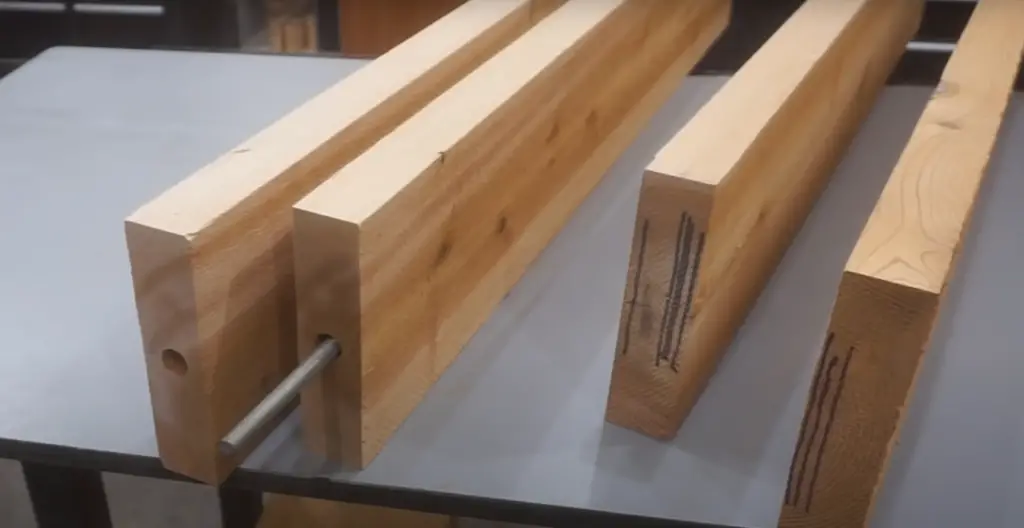
Another important factor to consider when drilling long holes is speed. Drilling at too high of a speed can cause the bit to overheat and break. Conversely, drilling at too low of a speed will cause the bit to bind in the material and create an uneven hole. The best way to determine the proper speed is to consult the manufacturer’s recommendations for the specific drill bit being used.
Finally, it is important to consider torque when drilling long holes.
The best way to determine the correct amount of torque is to consult the manufacturer’s recommendations for the specific drill bit being used. [3]
Suitable Drill and Bit For Work
For the job of drilling long, straight holes in wood, you will need a quality drill and an appropriate bit. If you don’t have a good quality drill, your work will be more difficult, and the results may not be as good. Likewise, using the wrong type of bit can also make your work more difficult and produce subpar results.
In terms of choosing a drill, you have two main options: cordless or corded. There are pros and cons to both types of drills, so it’s really up to you which one you prefer. If you opt for a cordless drill, make sure that the battery is fully charged before beginning your project.
As for bits, there are several different types that can be used for drilling long, straight holes in wood. The most common type is the spade bit, which has a wide, flat cutting edge that is ideal for creating clean, precise holes. Another option is the Forstner bit, which is designed for drilling very deep holes.
No matter which type of drill or bit you choose, it’s important to make sure that they are both sharp and in good condition before beginning your project. Dull drill or bit will make your work more difficult and produce less than stellar results. [1]
Tear Out
One of the most common problems when drilling long straight holes in wood is tearing out. Tear out occurs when the drill bit exits the back side of the board and leaves a ragged, splintered hole. There are a few things you can do to prevent tear out:
- Use a sharp drill bit. A dull drill bit will cause more friction and heat up the wood, making it more likely to tear out.
- Set your drill to reverse so that it spins the drill bit in the opposite direction. This will help to keep the bit from slipping and causing tears.
- Use a piece of scrap wood behind your workpiece. This will help to support the board and prevent it from splintering.
- Use a drill stop. A drill stop is a collar that goes around the drill bit and prevents it from going too deep into the wood. This will help to prevent tear out on the back side of the board. [3]
Jig Setting
One of the most important things to get right when drilling long, straight holes is the jig setting. If your jig isn’t set up properly, your drill bit will wander off course and you’ll end up with a wonky hole.
There are a few different ways to set up your jig, but the most important thing is to make sure that the guide rod is perpendicular to the workpiece. Once you’ve got that sorted, it’s just a matter of fine-tuning the position of the guide rod until you’re happy with the results. [1]
Dowel
This is probably the most common method for drilling long, straight holes in wood and it involves using a dowel.
To start, you’ll need to mark out the location of your hole on the piece of wood. Then, using a drill bit that’s slightly smaller than the dowel you’re using, create a pilot hole at each end of where your dowel will go.
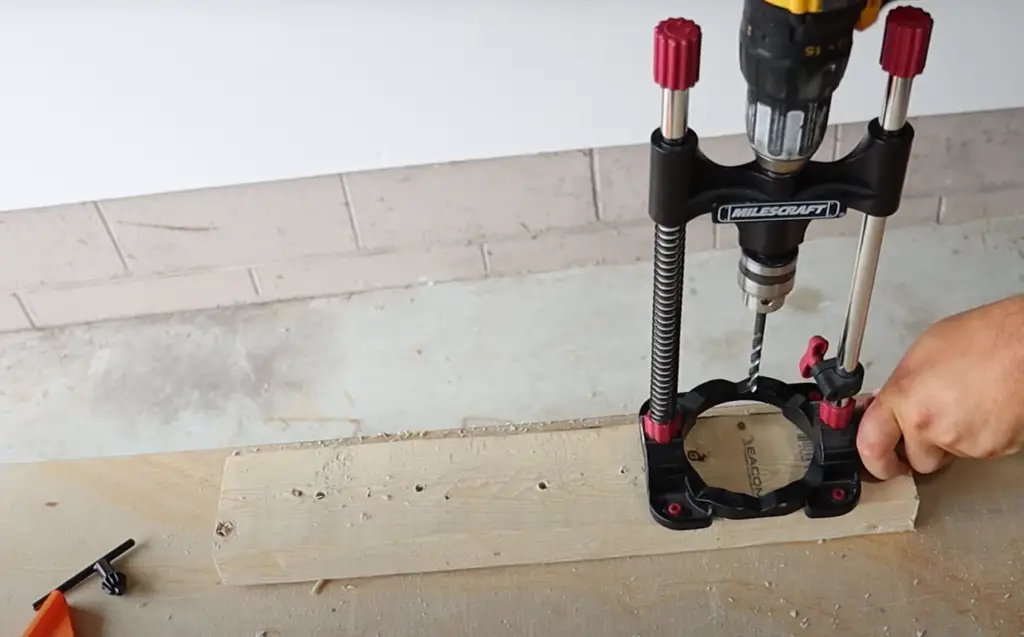
Once you have your pilot holes, insert one end of the dowel into the hole and then tap it with a hammer until it’s flush with the surface of the wood. Repeat this at the other end. [1]
Drilling Time
Now it’s time to start drilling! Begin by making a small pilot hole at the center of your board. This will help guide the long drill bit and prevent it from slipping. Once you’ve made the pilot hole, slowly and carefully begin drilling along your reference line. Remember to keep the drill bit straight and steady as you work.
If everything goes according to plan, you should now have a nice, long, straight hole in your wood board! Congratulations – you did it!
There are a few things to keep in mind when drilling long straight holes in wood:
- Always use a sharp drill bit for best results.
- If your drill bit starts to wander off course, stop drilling and start again from the pilot hole.
- Go slowly and be careful – a little patience goes a long way when drilling! [1]
For Straight Drill Hole
There are a few things you can do to ensure that your drill hole is perfectly straight. Firstly, use a sharp drill bit – a dull one will cause the drill to wander. Secondly, clamp your workpiece down securely – this will prevent it from moving around while you’re drilling. Finally, take your time and go slowly – rushing the job will only increase the chances of making a mistake. [1]
Drilling Choosing For Wood
There are different types of drill bits that you can use to make long, straight holes in wood. The best type of drill bit to use will depend on the size and type of hole that you need to make.
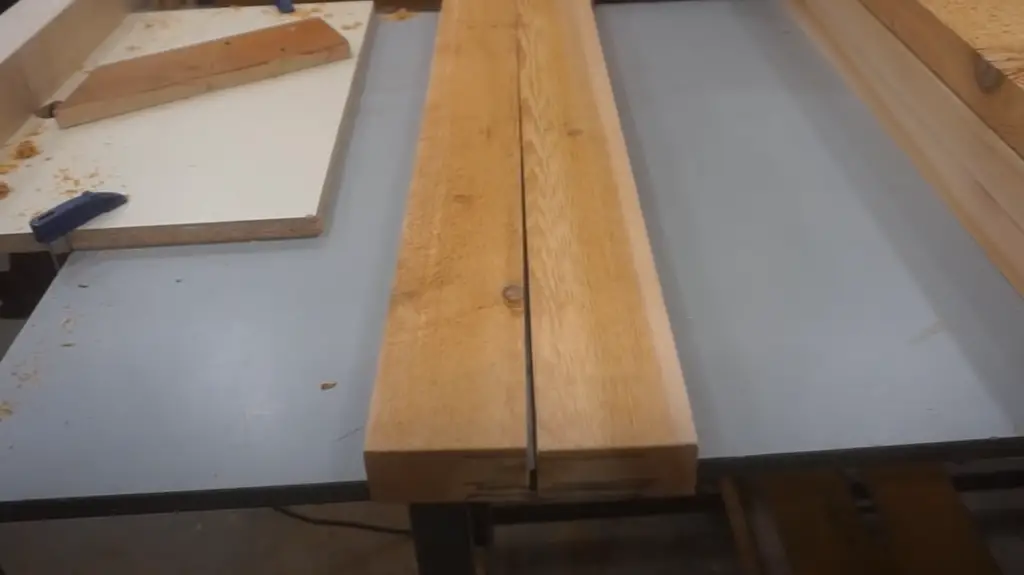
When choosing a drill bit, it is important to consider the size of the hole that you need to make. If you are not sure what size drill bit to choose, it is always better to err on the side of too large rather than too small. This way, you can avoid having to re-drill your hole if the first attempt is unsuccessful. [1]
How to Drill Straight and Square Holes without a Drill Press
You can use a hand drill, but for accuracy and consistency, it’s best to use a drill press. A drill press will also give you more power and control. If you don’t have a drill press, you can still get good results by using a doweling jig or an eggbeater-type hand drill.
If you’re drilling large holes, it’s best to use a spade bit. For smaller holes, use a twist bit. Be sure to keep the bit sharp for clean holes and easy drilling.
When drilling into end grain, it’s important to go slowly and use plenty of lubrication (wax or oil) to prevent the bit from burning up the wood. [2]
Hole Saws
If you’re looking for an easy way to drill long, straight holes in wood, then a hole saw is the answer. A hole saw is a power drill attachment that consists of a circular cutting blade with teeth that cut through wood like a hot knife through butter.
To use a hole saw, simply attach it to your power drill and set the depth of the blade to match the thickness of the wood you’re drilling into. Then, just position the hole saw over the spot where you want to make your hole and start drilling!
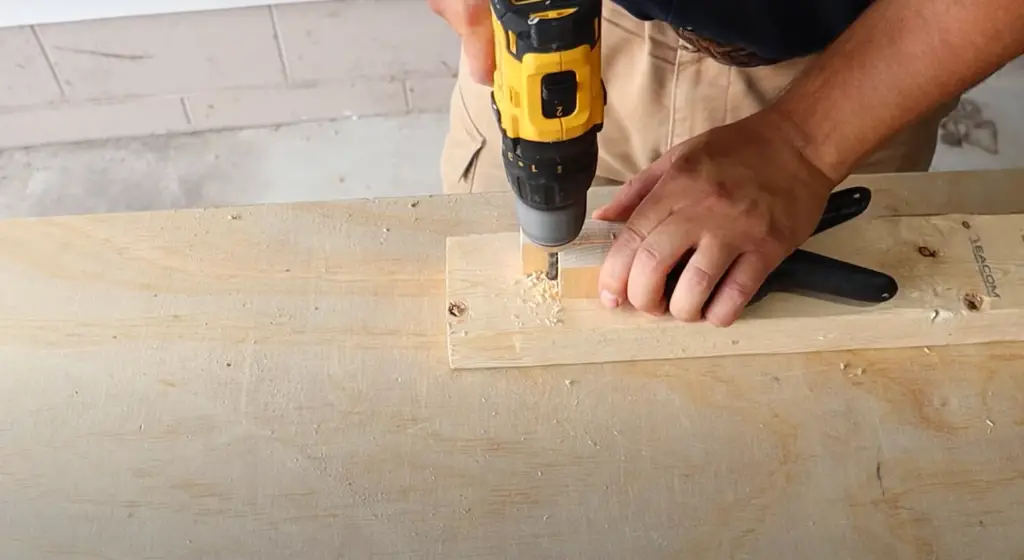
Hole saws are great for making large diameter holes (up to about six inches) in softwoods like pine and fir. But if you’re drilling into harder woods like oak or maple, then you’ll need to use a different type of drill bit. [3]
Spade Bits
Spade bits are another type of drill bit that’s great for making long, straight holes in wood. Unlike hole saws, spade bits have a pointed tip that helps them to stay on course as you’re drilling. This makes them ideal for drilling into hardwoods like oak and maple.
To use a spade bit, simply attach it to your power drill and set the depth of the blade to match the thickness of the wood you’re drilling into. Then, just position the spade bit over the spot where you want to make your hole and start drilling! [1]
Simple Depth Guide
As a general rule of thumb, the depth of your hole should be one and a half times the diameter of your drill bit. This will ensure that your bit doesn’t overheat and wear out too quickly.
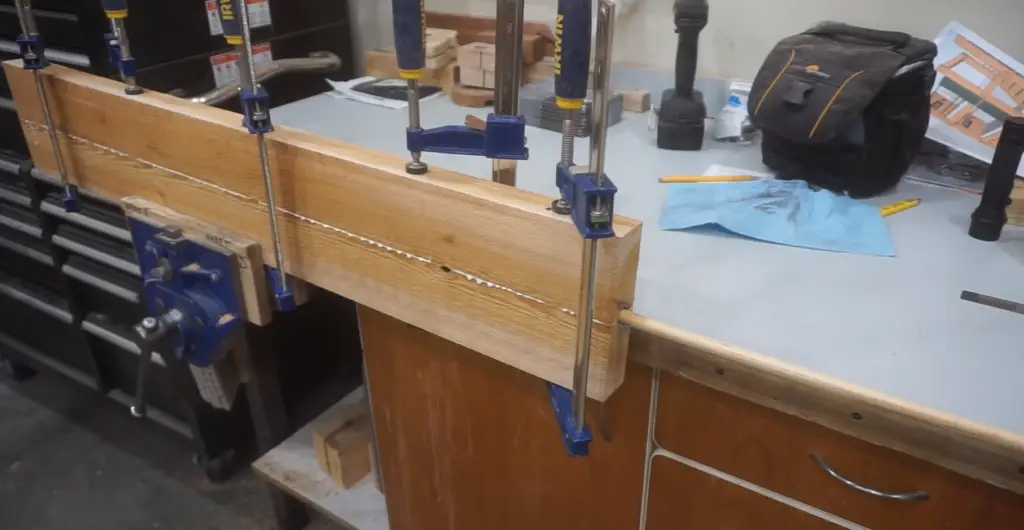
However, there are some exceptions to this rule. For example, when drilling through hardwoods, you may want to increase the depth to two times the diameter of your bit. This will help to prevent the bit from “binding” in the wood and breaking.
When in doubt, it’s always better to err on the side of caution and drill a shallow hole than a deeper one. You can always go back and make the hole deeper if needed, but you can’t make it shallower once you’ve drilled too deep.
If you’re using a power drill, be sure to use the correct speed setting for your drill bit. Drilling at too high of a speed can cause the bit to overheat and wear out quickly.
Slower speeds are better for larger bits, while higher speeds work better for smaller bits. For most general drilling applications, a medium speed will work just fine.
Finally, be sure to keep the drill bit lubricated with water or cutting oil. This will help to keep the bit cool and prevent it from overheating. [3]
FAQ
How do you drill a perfectly centered hole?
There’s a few different ways that you can make sure your hole is perfectly centered. The first way is to use a dowel jig. This is a tool that holds the workpiece in place so that you can drill a perfect, centered hole.
Another way to ensure your hole is perfectly centered is to use a Forstner bit. This type of drill bit has a center point and two cutting wings that cut cleanly and leave a smooth surface.
The last way to make sure your hole is perfectly centered is by using an adjustable stop collar. This attaches to the drill bit and allows you to set the depth of the hole, which prevents the drill bit from going too deep into the wood.
How do you drill a straight hole in the end of a board?
There are a few different ways that you can drill a straight hole in the end of a board. The first way is to use a drill press. A drill press is a machine that has a fixed table and a chuck that holds the drill bit in place. You can adjust the depth of the hole by moving the table up and down.
Another way to drill a straight hole in the end of a board is to use a hand held power drill and a jig. A jig is a device that holds the workpiece in place and guides the drill bit into the wood. There are many different types of jigs available, but they all work in essentially the same way.
What is a center drill bit?
This type of bit is typically used for drilling metal or hardwood. Center drill bits are available in a variety of sizes and styles, but they all have one thing in common: they have a pointy tip that helps to keep the bit centered on the workpiece.
There are two main types of center drill bits: those with straight flutes and those with spiral flutes. Straight flute bits are designed for use with hand drills, while spiral flute bits are designed for use with power drills. Both types of bits can be used to drill long straight holes, but spiral flute bits will usually produce a cleaner, more precise hole.
How do you center a drill without a lathe?
If you don’t have a drill press or a lathe, you can still center your drill bit by hand. First, find the center of your workpiece by measuring from each end. Then, mark the spot with a pencil.
Next, hold the drill bit so that it’s perpendicular to the surface of the wood. Slowly lower the drill bit onto the surface of the wood, making sure that it stays in line with the mark that you made.
Once the drill bit is touching the surface of the wood, start drilling slowly. As you’re drilling, keep an eye on the position of the drill bit and make sure that it doesn’t wander off course.
How do you turn a shaft without a lathe?
If you’re looking to turn a shaft without a lathe, there are a few ways you can do it. One way is to use a hand drill. Another way is to use a power drill with the correct attachments. Finally, you can also use a router. Each method has its own set of pros and cons, so be sure to weigh your options before deciding which one is right for you.
How do you find the center of a circle to drill a hole?
There are a few different ways that you can find the center of a circle in order to drill a hole. One way is to use a compass. Another way is to make your own jig using two pieces of scrap wood and a dowel rod.
Once you have found the center of the circle, mark it with a pencil so that you know where to place your drill bit. It is also helpful to make a small pilot hole before drilling the larger hole. This will help to keep the drill bit from slipping and will also give you a better idea of how deep you need to drill the hole.
Useful Video: How To Drill A Straight Hole Without A Drill Press
Conclusion
We hope that this article has helped to answer some of your questions about how to drill long straight holes in wood. Remember to take your time and be careful when working with power tools. If you have any other tips or advice, please feel free to leave them in the comments below. Thanks for reading!
References
- https://handymantips.org/drill-long-straight-holes-wood/
- https://www.manmadediy.com/4692-how-to-drill-straight-and-square-holes-without-a-drill-press/?chrome=1
- https://www.instructables.com/Drilling-Perfect-Holes/






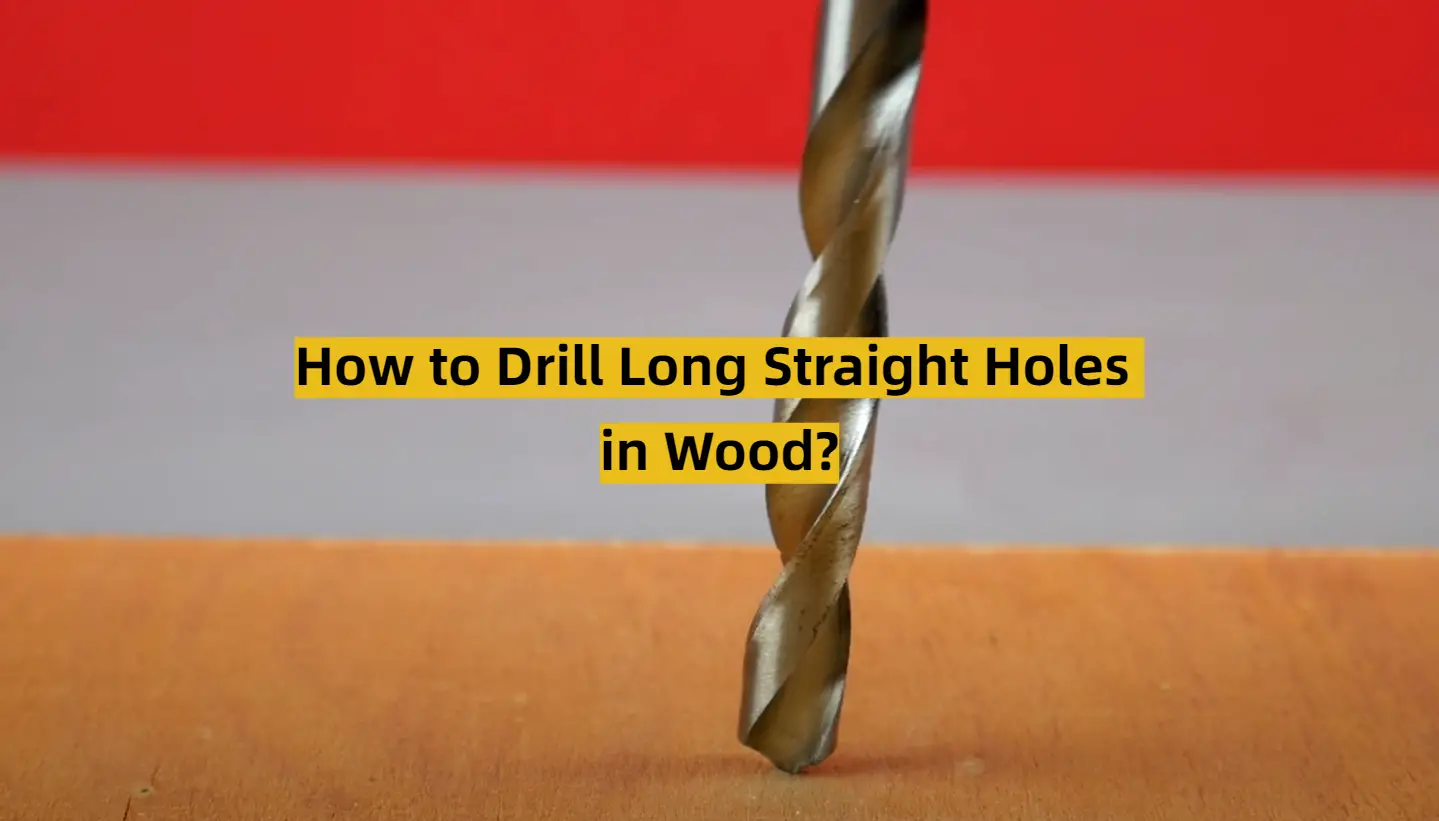




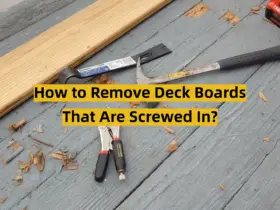

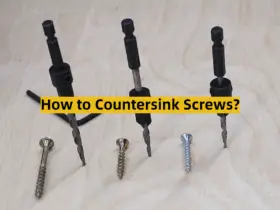
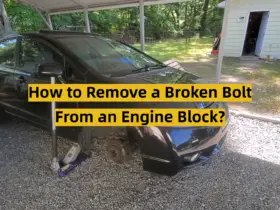
Leave a Reply